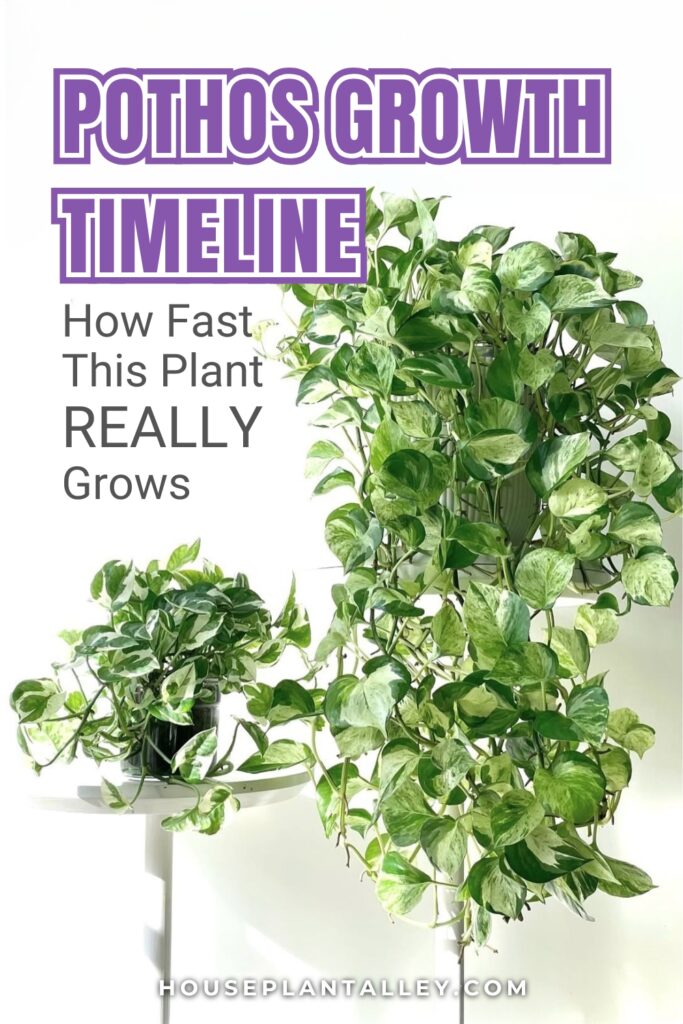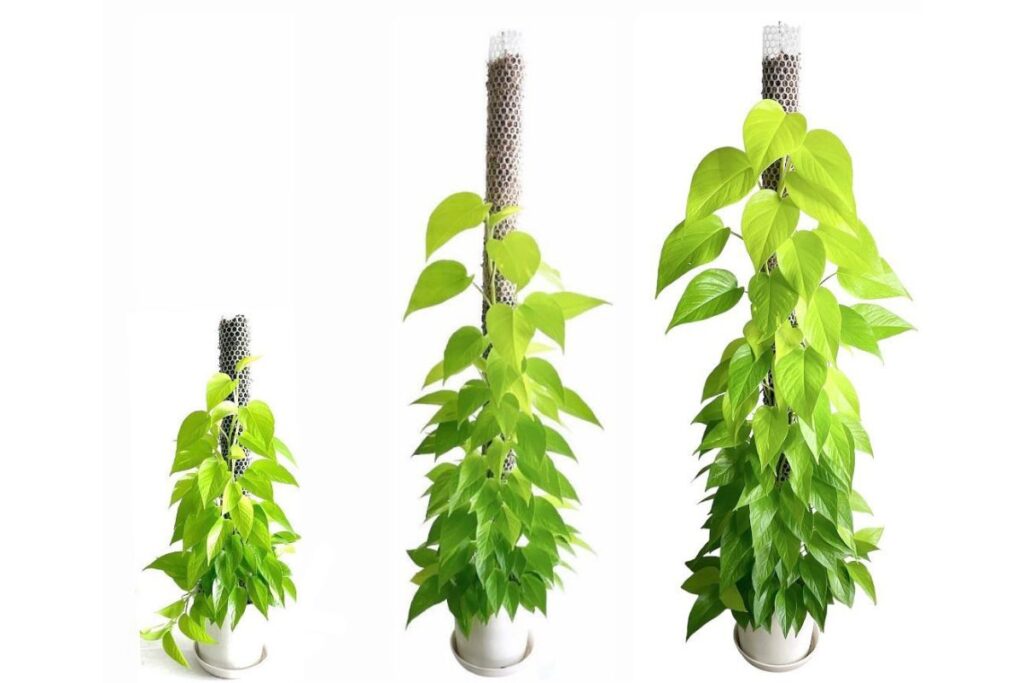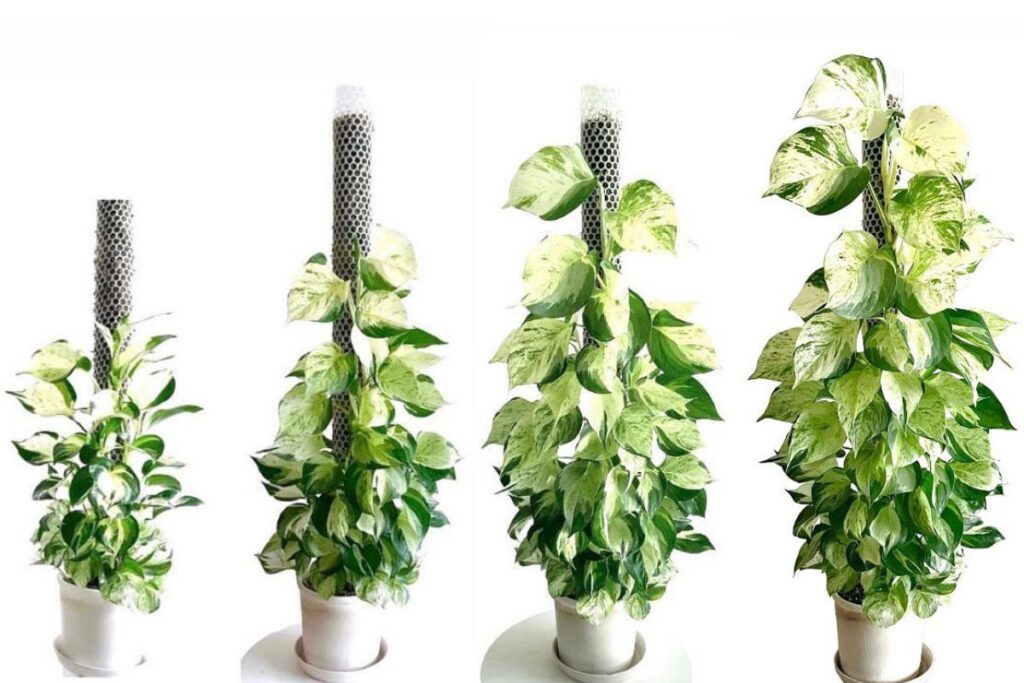Pothos plants are a popular choice for indoor gardens, as they are easy to care for and thrive in bright, indirect sunlight. But how long do pothos take to grow?
For those interested in growing their own pothos indoors, this article will provide an overview of the growth cycle so you know what to expect with your new plant.

Growth cycles vary depending on the type of pothos and environmental conditions, but generally, it takes about 6-8 weeks for pothos vines to reach maturity.
Here’s everything you need to know about caring for and growing pothos indoors—from soil preparation and watering schedules to pruning techniques that will help keep your plant healthy over time.
With a bit of patience and some TLC, you can have lush green pothos gracing your home in no time!
Contents
How Long Do Pothos Take To Grow?

Pothos is a great addition to any home. They bring life and an interesting texture with their lush, green foliage. While they may seem like low-maintenance plants, there are certain care requirements for them to thrive. Knowing how long it takes your pothos to grow can help you plan out the best pruning tips, light requirements, and fertilizing needs.
Most pothos tends to grow around 12 inches (30 cm) per month on average when given proper care. This growth rate is attainable under normal conditions in most homes such as room temperature, humidity, and light levels that the plant needs for photosynthesis.
It’s also important to note that some types of pothos will generally grow faster than others due to the amount of chlorophyll present in the leaves—the more green parts of the leaf there are, the better it will be able to produce energy from sunlight which helps with growth.
With spring through summer being considered its growing season, you should see two feet or more of new growth each year!
What Factors Influence The Growth Of Pothos?
Pothos plants are relatively easy to grow and care for, but there are a few factors that can influence their growth.
Proper lighting is essential for optimal growth; pothos needs bright indirect light or several hours of direct sunlight each day in order for them to thrive.
Additionally, humidity levels should be monitored—pothos need humid environments, so misting the leaves may help if your home has dry air.
Finally, fertilizer use is important; while it’s not necessary to fertilize pothos every time you water them, using a balanced liquid fertilizer once per month will ensure proper nutrition and healthy growth.
By taking into account all these factors when caring for a pothos plant, you can maximize its health and promote rapid growth over time.
Which Pothos Grows Fast?
When it comes to growing pothos, the Golden Pothos (Epipremnum aureum) is one of the fastest-growing varieties. These plants can quickly reach heights of up to eighteen inches in just a month!

Some genetic factors play a role in how fast these plants grow, and solid green-leafed varieties tend to be faster than their variegated cousins who lack chlorophyll for photosynthesis.
To ensure your pothos grows as quickly as possible, there are several things you should consider. Pruning techniques help maintain healthy growth rates by removing any dead leaves or stem that could stunt its progress. Adding soil amendments such as fertilizer will also help provide nutrients needed for quick growth.
Lastly, proper light exposure is essential; while they thrive best in bright indirect sunlight, too much direct sun can cause them to wilt and slow down their growth rate. With all of this taken into account, you’re sure to have a beautiful full plant in no time at all!
Which Pothos Grows Slow?
Some pothos plants are known for their slow-growing nature, and different varieties can take varying lengths of time to grow. The Cebu Blue Pothos, Neon Pothos, Jade Pothos, Manjula Pothos, and N’Joy Pothos tend to be the slowest-growing pothos varieties.
Variegated types like Snow Queen and Manjula also tend to grow slower than other species due to their lower chlorophyll levels in their leaves.

It is important that when caring for a pothos plant you maintain consistent water temperature as well as adequate amounts of light and humidity so that your plant grows at its optimal rate. Keeping up with regular maintenance will help ensure that your pothos stays healthy and vibrant, no matter how long it takes them to reach maturity.
How To Make Pothos Grow Faster
Pothos are known for being easy to care for, but if you want them to grow faster, there are a few things you can do.
First, pay attention to their lighting requirements. Pothos thrive in bright, indirect sunlight. If your pothos isn’t getting enough light, it may not grow as quickly as it could. Consider moving your plant closer to a window or investing in an artificial light source.
Another way to encourage fast growth is through pruning techniques. Regularly cutting back the vines can help stimulate new growth and keep the plant looking full and healthy. When pruning, make sure to use clean shears and cut just above a leaf node (the spot where a leaf attaches to the stem).
Lastly, consider fertilizing your pothos with a balanced liquid fertilizer every two weeks during its growing season (spring through summer). This will provide extra nutrients that can help speed up growth without over-fertilizing and risking damage to the roots.
Does Pothos Grow Faster In Soil Or Water?

Pothos can be grown in a variety of ways, but it is important to choose the right medium for optimal growth.
In established plants, the soil is often best as it provides more nutrients and allows for maximum root development.
For cuttings, however, water may be better suited due to its fast-rooting capabilities.
Regardless of which method you use, some additional considerations should also be taken into account—such as ensuring that the pothos gets enough light exposure, using the correct fertilizer type, and employing pruning techniques if needed.
Proper care will ensure healthy growth and make the most out of your pothos experience!
Conclusion
Overall, the length of time it takes for pothos to grow can vary depending on several factors. Some types of pothos may grow faster than others due to their genetics, while environmental conditions like lighting and humidity levels can also impact growth rates.
If you’re looking to encourage your pothos to grow quickly, there are steps you can take such as providing ample light and moisture or fertilizing regularly.
Additionally, choosing a fast-growing variety like Golden Pothos might be a good option if you want results sooner rather than later.
Ultimately, whether your pothos is growing in soil or water will not have a significant impact on its overall growth rate. However, by taking care to provide ideal conditions and selecting the right type of plant, you may be able to speed up the process and enjoy thriving pothos plants in no time.
